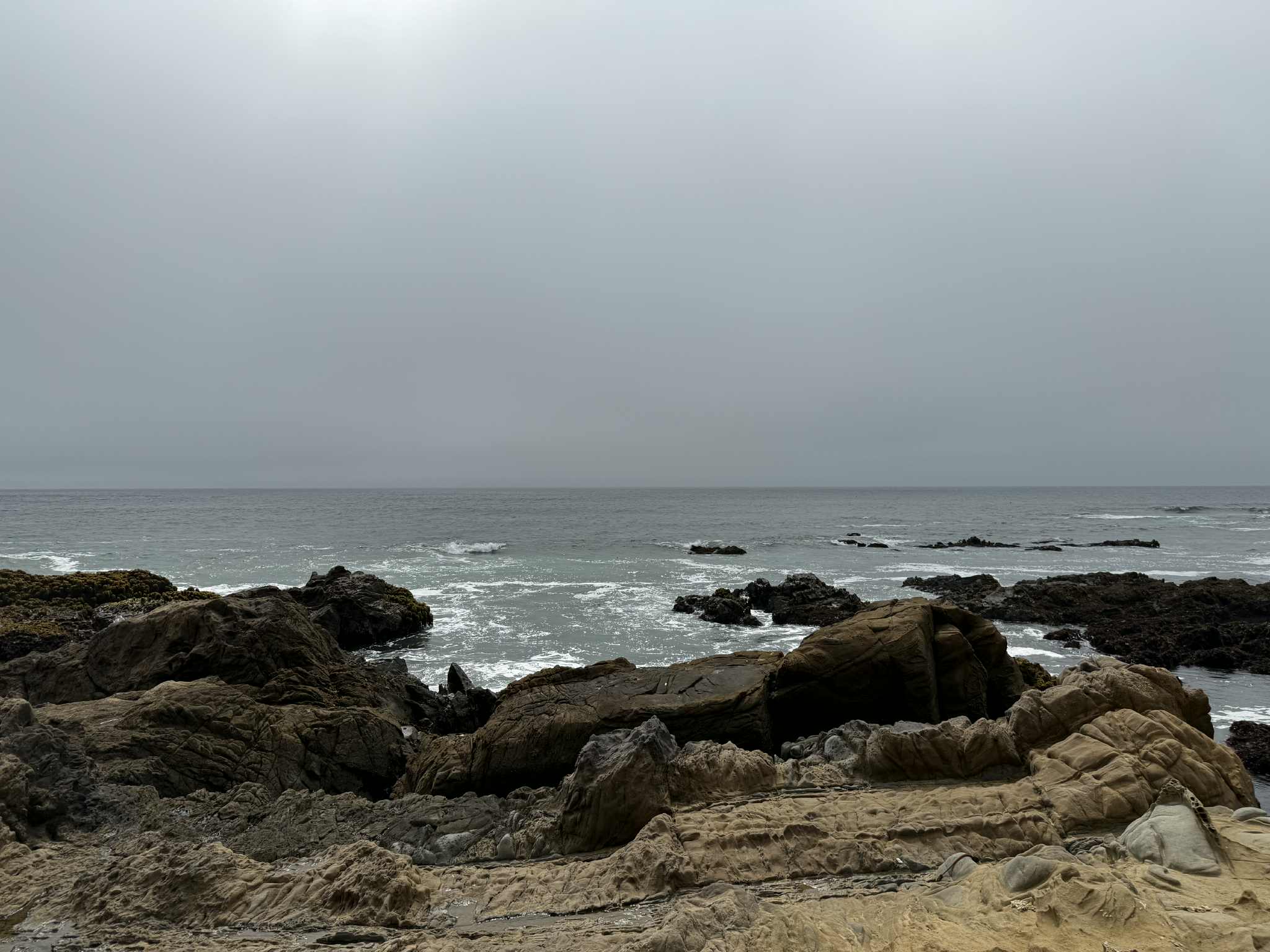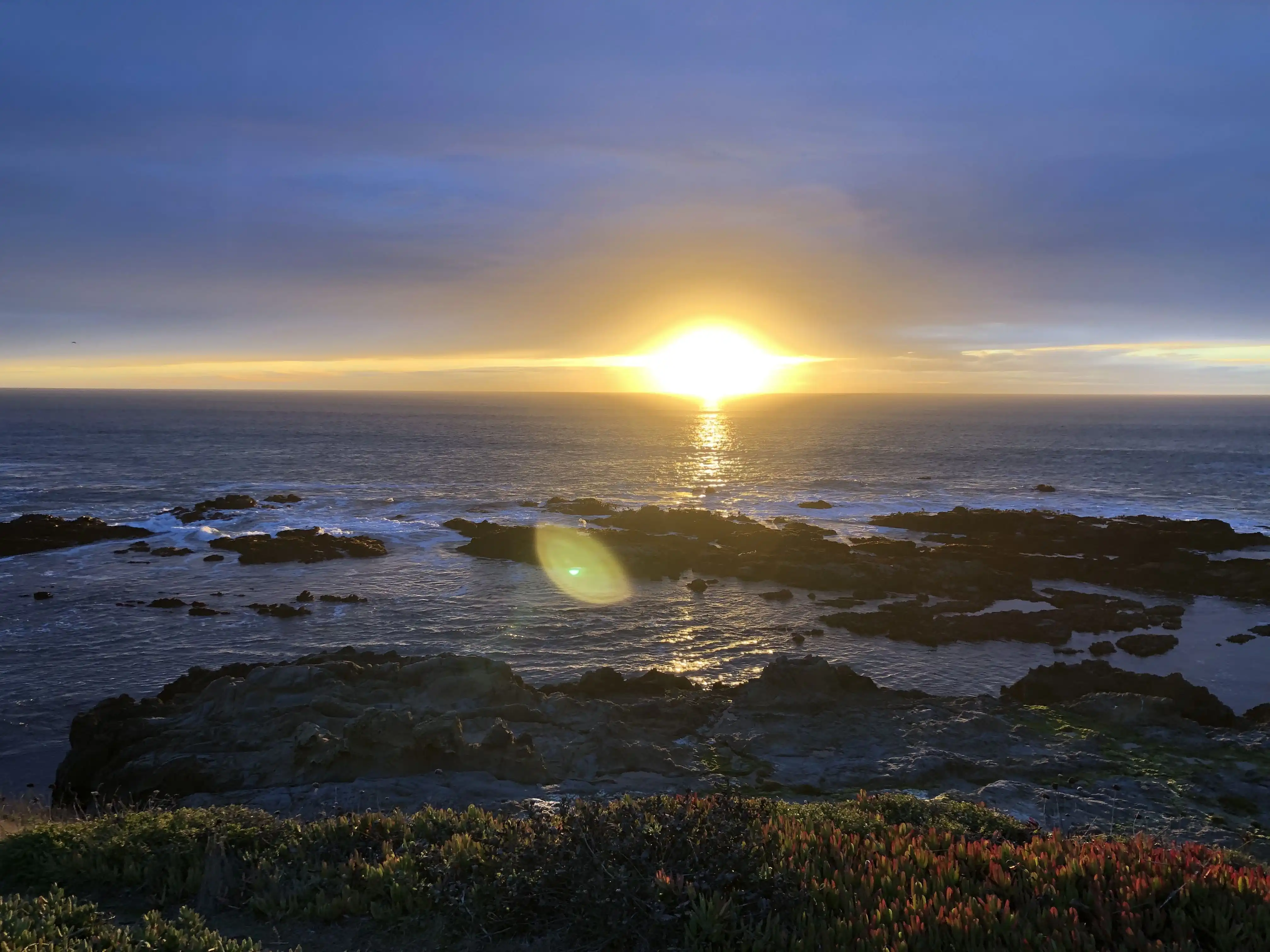Fishing the San Mateo Rocks
Along the coast between Pacifica and Ano Nuevo State Park, a set of scattered rocky beaches provide beautiful views of the Pacific Ocean, as well as occasional chances for rocky-bottom species. Most of these areas lie within state parks (Pescadero, Bean Hollow, Pigeon Point) along Highway 1, providing easy access and some facilities.
About this Stretch of Coast
Always keep your eyes on the ocean! Like the Santa Cruz Cliffs, this section of coast can have some big waves, and people foraging and fishing the coast here have been swept into the water by rogue waves. Always check the wave forecast, and be safe. In addition, many of the rocks here can be quite slippery, so take your time when climbing these rocks to get to fishing spots.
In general, the rocky stretches of coastline here can be fished at both low tide or high tide. A simple high/low rig, baited with shrimp or squid, works quite well for rockfish, striped surfperch, and the occasional cabezon. Be prepared to bring a lot of extra tackle, as it can be very easy to snag and break off. In general, try and find the deeper holes and deeper water, as there can be a lot of variation in depth close to shore. Keep in mind spots that are excellent at high tide can be left high and dry when the tide gets low, so be prepared to move around if there is significant tidal variation.
If you can find a nice access point to deeper water, swimbaits rigged on a jighead or Texas rig can net you a couple rockfish — the typical catch will be black or blue rockfish. When I have been targeting perch here in the past, lingcod have occasionally latched onto a tiny piece of shrimp, for whatever reason.
At strong minus tides, these beaches can be great places to do some poke-poling - basically sticking your bait in the deep holes under boulders and rocks to catch trapped fish. With a small strip of squid and a good pair of boots or waders, you can catch some nice monkeyface eels and small rockfish. These fish seem to be experts at stealing bait, so make sure to bring a lot of extra.
If you’re interested in crab, I’ve done pretty well at the rocky beaches here throwing snares for rock crab. The sandier areas will net you a sprinkling of Dungeness.
Sometimes, the fishing can be slow, if the waves are choppy and mother nature does not cooperate. But the coastline views of the ocean here are incredible — you won’t regret making the drive.

Notes
Some of these spots have been hit quite hard in recent years, and as a result fish sizes as well as catch rates have gone down significantly. Do your part for future generations, and only take home the fish you’ll actually use and eat yourself.
Most of the rockfish I’ve caught here are black-and-yellow rockfish, similar to other rocky-shore fishing spots in the rest of the state. If you intend on keeping the fish you catch, keep in mind that this particular species of rockfish are classified as high in methylmercury and PCBs, and you should limit your consumption if possible.
Check out my Bay Area rockfish fishing guide.
Recommended Gear
Berkley Gulp Sandworms
Berkley Bonefish Ribbed Swimbait
Keitech Swimbait
When fishing the rocks, there is always a surprising amount of current, so you’ll need some heavy weights. I usually use anywhere from half an ounce to four ounces for my rigs. You’ll also snag and break off a lot, so make sure to bring a lot of spares. I’ve listed the weights I use below, in order of preference.
Cloth Bags
Ultra Steel Bullet Weights, 3/4 ounce
Lead Sinkers, 2 ounces
Crab Snare
Recent Reports
A quiet day at Bean Hollow
09 Aug 2025
I had a long week at work so I was itching to get out onto the rocks today. Originally, I was planninng on making the drive out to the Monterey/Carmel cliffs, but unfortunately I woke up too late and the drive ended up being about an hour longer than usual thanks to traffic. So, I decided to pivot to Bean Hollow State Beach.

I’ve fished here at Bean Hollow many times before, but I’ve always primarily fished the northern end of the park. Thus, I decided to use the time to try and scout out a couple more spots here more on the southern end. I first went to the very southern tip of Bean Hollow, where a rocky point juts out just past a sandy cove. I was hoping that this spot would give some nice deep water access, but no cigar — it did not really seem particularly deep, and some big waves kept crashing through that made fishing here pretty spooky. I did see someone catch a small cabezon when casting into the sandy cove, so guess there might be more fish if the conditions are calmer. Afterwards, I decided to try and do a bit of pocket fishing in some of the more protected areas of the park. However, it was pretty hard to get to any of the more interesting rocky spots as there were just enough waves today to make it a bit dangerous.
Unfortunately, I did not catch any fish for about 7 hours of scrambling about the rocks. Usually, dropping a bit of squid into a good tide pool can net you a good eel or rockfish, but no cigar today. Bean Hollow tends to be pretty shallow, so usually it fishes best at either high tide, when enough water comes in for the bigger fish to make their way within casting distance, or at low tide when you can walk out to deeper water. However, today the tide was falling all day to a pretty mild low tide, making the conditions pretty suboptimal when combined with the big waves. I’d probably wait for a good low tide to come back.







